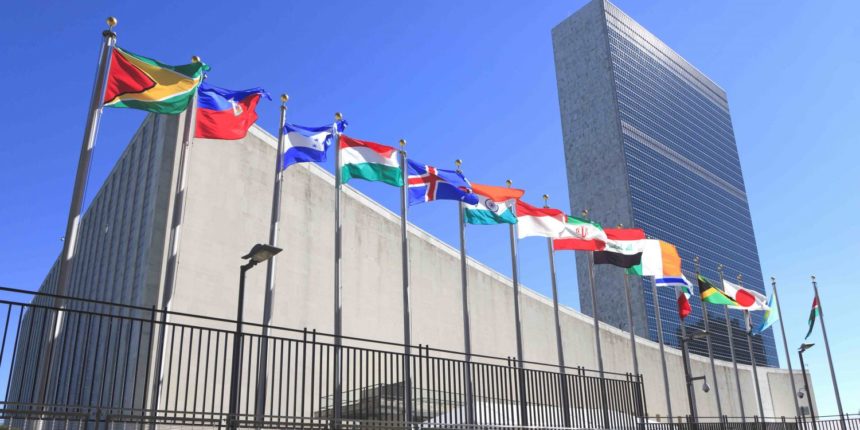By Akanimo Sampson
The United Nations has rolled out a multi-billion naira humanitarian respond plan for 7.1 million victims of the undying Boko Haram terrorism said to be at risk in Nigeria, and neighbouring Cameroon, Chad and Niger.
Among the worst cases, going by reports from humanitarian agencies, are women and children.
In support of Nigeria and countries hosting Nigerian refugees, the UN and partners simultaneously launched the 2019-2021 Humanitarian Response Strategy and the Regional Refugee Response Plan, respectively seeking $848 million and $135 million, a total of some N354 billion to continue providing food, water, shelter and protection to the most vulnerable people in the four countries.
The Humanitarian Response Strategy also articulates a collective vision for the next three years of humanitarian action and marks the first time in Nigeria that humanitarian actors are adopting a multi-year approach.
Millions of civilians continue to grapple with extreme adversity across North-East Nigeria and the rest of the Lake Chad region, where a recent surge in violence has uprooted tens of thousands more people, exacerbating an already dire humanitarian situation.
Top UN officials are calling for support to respond to a humanitarian crisis that is now in its tenth year.
The Resident and Humanitarian Coordinator for Nigeria, Edward Kallon, said ‘’although the primary role of humanitarian aid is to help people survive and maintain their dignity, the humanitarian response integrates approaches where and when possible to reduce communities’ dependency on aid.’’
He said, “This is especially true with regard to the response provided for returnees, host communities and the protracted displaced communities. For the next three years the humanitarian and development actors in the BAY states (Borno, Adamawa and Yobe) will work towards enhancing coherence and synergies between the development and humanitarian responses, so that they can work jointly with the government to ensure the sustainable delivery of basic services to those in need, particularly those living in protracted displacement.’’
Humanitarian organisations in Nigeria are targeting 6.2 million people hardest-hit by the crisis in the BAY states. Although aid groups targeted almost the same number of people in 2018, this year’s budget is around $250 million less than the previous year, based on the assessed needs and the realistic capacity to deliver aid.
According to Kallon, “We must sustain the efforts made over the recent years to ensure that aid reaches those who need it most. The decade-long conflict has brought immense suffering upon children, women, men, their families and communities. We have saved millions of lives, and as we strive to provide immediate response to new and existing humanitarian needs, we must also focus on addressing the causes of such untold suffering.’’
From 2019 to 2021, humanitarian partners will continue to deliver life-saving humanitarian assistance and protection in the North-East, prioritising the most acute needs identified in the Humanitarian Needs Overview.
All activities will promote the safety, dignity and equitable access of affected girls, women, boys and men to humanitarian aid. Failure to respond to their most basic needs will particularly impact six critical areas:
*Food insecurity will persist among an estimated 2.7 million people if adequate food and ivelihoods assistance is not sustained. Improvements in food security indicators will likely relapse if assistance is slowed down as the food security situation remains fragile.
*Some five million people in the BAY states will be at heightened risk of protection-related issues. More than 800,000 women, girls, men and boys living in dire conditions in inaccessible areas will continue to be without access to life-saving services.
*Over 121,000 children suffering from acute malnutrition will be at risk of death. Children coming from inaccessible areas will be at greater risk with much higher rates of malnutrition: 41 per cent are acutely malnourished. Over one million children will face moderate and severe acute malnutrition, experience medical complications and be at higher risk of dying due to inadequate coverage of health services, especially in-patient treatment facilities, and limited referral mechanisms.
*The 1.8 million IDPs currently living in deplorable conditions in camps, camp-like settings and within host communities will continue to suffer. Of those who live in camps or camplike settings, 60 per cent live in high levels of congestion and will continue to be exposed to heightened protection risks, shelter overcrowding, unhygienic conditions, limited access to water, malnutrition, and higher risks of diseases.
*About 1.6 million who have returned to areas with limited services and no access to livelihoods will continue facing challenges. These returnees will be at risk of further displacement and will have to find alternative locations where basic social services and structures are available.
*An estimated 2.2 million children who currently have no access to quality education will remain in an idle state and at risk of negative copying mechanisms. Children out of school are at great risk of exposure to abduction, kidnappings, enslavement, forced recruitment into armed groups, and use in suicide attacks. The new generation of hope, with these children accessing education for a better future, will be completely diminished.

